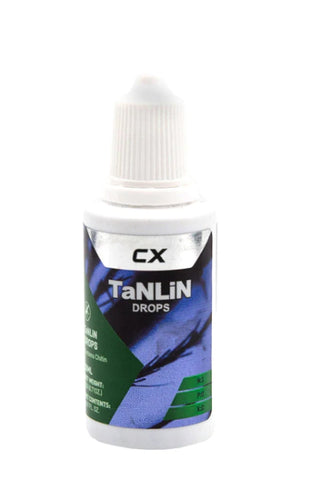Ultimate Guide To Fungus Gnats
How to Identify, Control and Prevent Fungus Gnats
Fungus gnats can harm indoor plants if left unchecked, but they can also be a nuisance. Taking preventative measures is essential to avoid the negative impact of these pests on your plants and your peace of mind.
Understanding Gnats: Life Cycle and Behaviour

Adult gnats lay their eggs in moist soil and the larvae that hatch feed on organic matter in the soil, including roots. If the infestation is severe, the larvae can cause damage to the roots, which can lead to stunted growth and wilting. These tiny black flies, which measure only two and three millimetres in length, are more closely related to mosquitoes than common houseflies. Because they need moist soil to reproduce, the presence of fungus gnats indicates that the soil is being overwatered. The larvae move through the soil, disturbing the roots and soil, leading to poor water and nutrient uptake by the plant. Gnats can pick up and transmit plant diseases, leading to further damage and even plant death. The presence of gnats can stress out plants, making them more vulnerable to other pests and diseases.
Controlling Gnats: Natural and Chemical Methods for Eliminating Fungus Gnats

You should ensure that your plants have adequate drainage and you don't overwater to prevent an infestation of these annoying bugs.


Yellow Traps, Tanlin, Mosquito Bits, Nematodes & Predatory Mites:
You can catch the adult fungus gnats with yellow sticky fly traps. You can find these at your local plant nursery or Bunnings. If you already have an infestation of buzzing fungus gnats, you need a solution that will last longer and you should focus on the larvae. After the top five centimetres of soil have been allowed to dry out completely, you can attempt to kill the larvae using Tanlin drops or mosquito bits. Nematodes, such as Stenernema feltiae, or predatory mites like Hypoaspis miles, are options for those looking for a less artificial method and more in line with nature.
Buy sticky traps from: Dr Greenthumbs or Bugs for Bugs or Bunnings
Buy TaNlin Drops from: Dr Greenthumbs
Buy Hypoaspis from: Bugs For Bugs

Repotting, Diatomaceous Earth & Bactivate:
It may be necessary to repot the plant into fresh soil if it has been infested with fungus gnats. Before repotting the plant, you must ensure the roots have been thoroughly cleaned. This will prevent the infestation from spreading. In addition, you should use something specific to the new medium to avoid re-infestation. This might be a soil cover like diatomaceous earth or a insecticide like neem oil or Sacarid Fly drenches. You can also purchase a product called Bactivate from plant nurseries. It is a natural soil bacteria that promote healthy plant and root growth. It is a bacteria that Gnats feed upon and paralyses their digestive system.

Insecticides:
Scarid Fly Insecticide, Gnatural Scarid Gnat Bio Insecticide, and Neem Oil are all effective insecticides commonly used to control and eliminate various types of insects, including gnats and flies. Scarid Fly Insecticide contains imidacloprid, a powerful insecticide that kills insects by disrupting their nervous system. Gnatural Scarid Gnat Bio Insecticide, on the other hand, is an organic insecticide that contains plant-based extracts and beneficial microorganisms that attack the larvae and pupae of the gnats, thus breaking their life cycle. Neem Oil, derived from the seeds of the neem tree, contains azadirachtin, a compound that repels and disrupts the feeding behaviour of insects, preventing them from causing damage to plants.
Electronic Fly Traps
Electronic fly traps are a helpful tool for controlling flying insects in indoor spaces. They work by emitting UV light, which attracts flying insects towards the device, where they are trapped using a glue board or electric grid. Electronic fly traps are safe, easy to use, and can help prevent flying insect infestations from spreading. There are many on the market used for mosquitos and you can buy them from Amazon and eBay. Make sure you buy one that uses Australian charging ports. Buy from: Dr Greenthumbs
Preventing Future Gnat Infestations: Tips and Strategies for Keeping Your Home Gnat-Free
By carrying out the procedures outlined in this article, you will be able to get rid of the annoying fungus gnats that have been flying around your houseplants. It may take some work, but it will be well worth it, in the long run, to ensure that your treasured houseplants continue to thrive despite the infestation caused by these pests.
- Water plants only when the top 5cm of medium is dry, and avoid overwatering or letting plants sit in standing water.
- Ensure your pots have proper drainage holes to allow excess water to drain away from the roots.
- Use a high-quality, well-draining potting mix to promote healthy root growth and prevent soil from becoming waterlogged.
- Quarantine any new plants before bringing them into your home to ensure they are not already infested with gnats or other pests.
- Use a layer of sand or gravel on top of the soil to deter adult gnats from laying eggs and prevent larvae from emerging.













Comments
Mimi Iannillt said:
I’ve been battling the gnats and the war is going well. My son suggested I gently poke the soil to make romance more difficult. I have many little tins around them, a Katchy device that works well. I used. BTI dust, too.
I just read about pieces of garlic in the soil. I’ll try that next. They did a job on my patchouli plants and they must die.